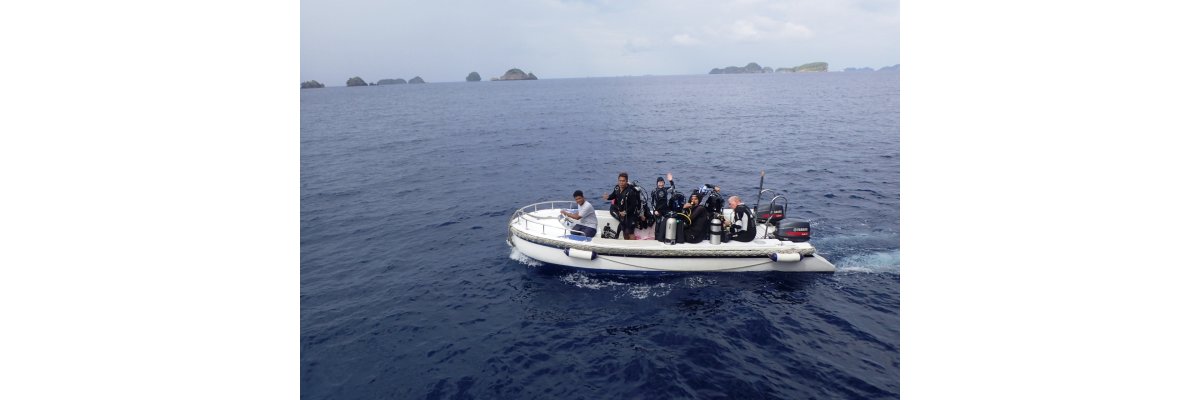Raja Ampat, in the far East of the Indonesian archipelago, has rapidly become a major dive destination.
The seven Marine Protected Areas established in 2007 have been highly successful in sustaining the diversity of marine life ensuring divers can expect to see healthy colourful corals, large schools of fish, reef sharks, wobbegong sharks, tiny pygmy seahorses and the wondrous Manta ray.

The remoteness though does mean most dives are conducted by boat and divers need to be aware of fast currents that can run throughout the “Four Kings”. Being visible at the surface, whilst avoiding increased boat traffic at dive sites is extremely important, especially as there are limited medical facilities in the region. Divers are advised to always deploy a SMB prior to making an ascent from safety stop.
But which Surface Marker is the ideal choice for the local conditions?
Size Matters Well actually in Raja Ampat, not so much! Though you may drift for some distance at sites such as Cape Kri and Sardines in the Dampier Strait, the surface water rarely swells above a slight ripple. Your SMB should be filled to the fullest to make it easy to see but a tall marker is not necessary.
X-Markers and SM7s both at 145cm are good choices, whilst our Pocket Buoy has a height of 152cm.
Colour preference The weather in West Papua is highly changeable, one moment the sun is shining brightly, the next dark clouds have rolled in and the rain is hammering down. The water temperature remains balmy 28c (82f) but surface conditions and light vary from day to day, dive to dive.
In such conditions a yellow /orange Surface Marker would be the ideal option. The orange side is highly visible in bright sunlight, whilst the yellow is perfect for low light, misty times when an orange marker could be more difficult for tender drivers to spot.
Magic Mountain in the Misool region and Blue Magic in the Dampier Strait are two of the best sites where mantas congregate, however both are submerged seamounts, the top of the reef ranging from 6-12m. To deploy your DSMB from those depths you should utilise the 8.5m webbing deployment system or invest in a finger spool which can be attached to any of our Surface Markers with metal clips.
You could of course use a shorter line if you feel comfortable drifting in the blue during your safety stop, but moving off the pinnacles may mean you miss out on the Manta show!
Other considerations.... To reach Sorong, where most liveaboards depart and resorts collect guests, involves at least one domestic flight. Budget Indonesian airlines have reduced allowance for check in luggage so baggage weight has become a concern. Our Pocket Buoy is just 135g whilst the SM7 is 220g and the X-Marker WDS only 380g.
Personalise your Surface Marker and make it easy to identify when you are back on the tender boat or dive deck.


